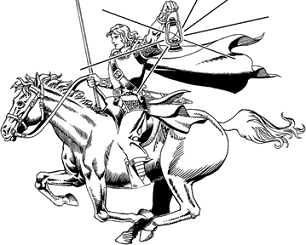SAXON, SINGAPORE, AND KHAN ACADEMY
The choice of mathematics curriculum varies from one school to the next, and one area to the next. The choices are driven by school politics, price, convenience, familiarity, teacher preference, and parental complaints.Home school teachers have the luxury of being free from most of these influences. Over time, and through experience, home scholars have largely settled on Saxon mathematics as the curriculum of choice. Two other mathematics curricula which have risen to meet the higher standards of home education are the Singapore mathematics books and the online Khan Academy. Khan Academy is an online series of lessons, including diagrams, oral instruction, and mathematics problems which reinforce the lesson until the student is able to work ten in a row of that type correctly. It originated in the United States. Khan Academy is more entertaining for students. This may provide more motivation. Thoroughness and retention may lack when compared to Saxon Mathematics.
The Singapore mathematics curriculum was developed in Singapore. Students from Singapore have done quite well in mathematics scores when compared to other students around the world. This has led to the curriculum being called "Singapore" internationally, and to its adoption by some English speaking schools around the world. Home school families worldwide, including in North America, have also used the Singapore mathematics books with success. For teachers who are looking for a top quality mathematics curriculum which is from the Commonwealth, Singapore mathematics is a good choice. Saxon mathematics is recommended by Vanguard Education.
SAXON MATHEMATICS
Saxon mathematics has largely become the home school standard. It is a good curriculum with excellent, proven results. It was created for use in the public schools in the United States, but public schools have largely moved away from it for reasons which will be discussed below.Although Saxon mathematics is an American curriculum, it would work well in any English speaking country. Saxon teaches metric. Saxon also teaches what most outside the United States call imperial measure. The only difficulty is that Saxon teaches using the U.S. pint and the U.S. gallon, which are different from the Imperial pint and the Imperial gallon. How is Saxon mathematics different from other mathematics books? There are three main distinctions:
(1) Problems. Lots of problems. Each lesson has approximately thirty mathematics problems for the student to do. This is one of the reasons that Saxon mathematics is rarely used in public schools. Public school teachers and parents complain that "there are too many problems" for the students to do. This is also one of the reasons that home scholars do so well on the mathematics portion of standardized tests in the United States - practice at solving problems. Not only does each lesson have plenty of problems, there are supplemental practice problems in the back of most of the books. If the student has trouble with any particular topic, the student can be assigned more practice the following day from the supplemental practice problems.
(2) Review. The Saxon mathematics books constantly review old material. Most mathematics books teach a new concept, test on it, then move on and do not revisit that material again. Saxon mathematics incorporates review in every problem set. The student is not allowed to forget old material because he must constantly use it. Oddly enough, this is another complaint that public school teachers have: "We already learned that." Oddly enough, home school students do very well on the mathematics portion of standardized tests in the United States. Or did we already learn that, too? (3) Well organized and well taught lessons. This feature is not unique to Saxon; there are other mathematics curricula which also have this feature. One thing that Saxon mathematics does which is not often seen in other curricula is the use of irrelevant information. For example, a problem might read "Fifteen students in room 215 scored above 80% on the test, while only twelve students in room 136 scored above 80% on the test. If there are twenty-four students in room 215 and eighteen students in room 136, what percentage of the students in both rooms combined scored above 80% on the test?" The numbers 215, 136 and 80% are not used in solving the problem. The student must recognize which numbers are needed in solving the problem and which numbers are not needed.
Also, Saxon sometimes makes up names, or uses unusual names, in the problems, so that the student realizes that the name of something is not important in solving a mathematical problem. For example, "Twelve oophas each ate nine shripes. How many shripes were eaten?" (Both of these example problems are not actual problems found in the Saxon books, but were created as examples of problems in the Saxon books.)
1 MATHEMATICS AND HOW TO THINK
2 WHICH MATHEMATICS CURRICULUM TO USE (You are on this page)
3 WHAT TO BUY WHEN USING SAXON
HOW TO TEACH MATHEMATICS - Takes you to the Mathematics Curriculum section



